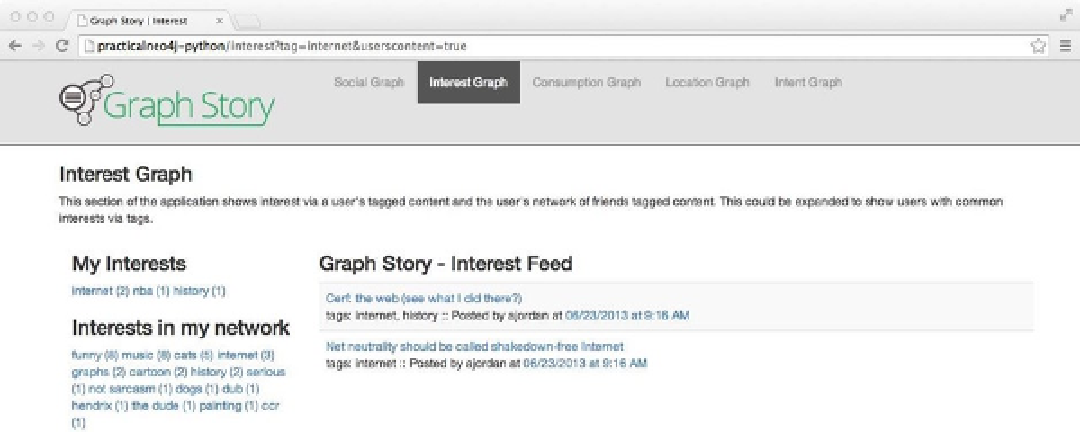Database Reference
In-Depth Information
Interest Graph Model
This section looks at the interest graph and examines some basic ways it can be used to explicitly define a degree of
interest. The following topics are covered:
•
Adding filters for owned content
•
Adding filters for connected content
•
Analyzing connected content (count tags)
Interest in Aggregate
Inside the
interest
route of graphstory.py, we retrieve all of the user's tags and their friends' tags by calling,
respectively, the
user_tags
and
tags__in_network
methods found in the
Tag
class. This is displayed in Figure
9-12
in
the left-hand column.
Figure 9-12.
Filtering the current user's content
The display code is located in
{PROJECTROOT}/app/views/graphs/interest/index.html
. The
interest
route
also uses two additional methods, which are shown in Listings 9-33 and 9-34. The
get_following_content_with_tag
finds users being followed, accesses all of their content, and finds connected tags through the
HAS
relationship type.
The
get_user_content_with_tag
method is similar but is concerned only with content and, subsequently, tags
connected to the current user. As mentioned earlier, the methods return an array of content and tags, which supports
an autosuggest plugin in the view and requires both a label and name to be provided in order to execute. This
autosuggest feature is used in the status update form as well as some search forms found later in this chapter.
Listing 9-32.
The
interest
Route
# show tags within the user's network (theirs and those being followed)
@route('/interest')
def interest():
# get the user's tags
userTags = Tag().user_tags(graph_db, request.get_cookie(graphstoryUserAuthKey))

